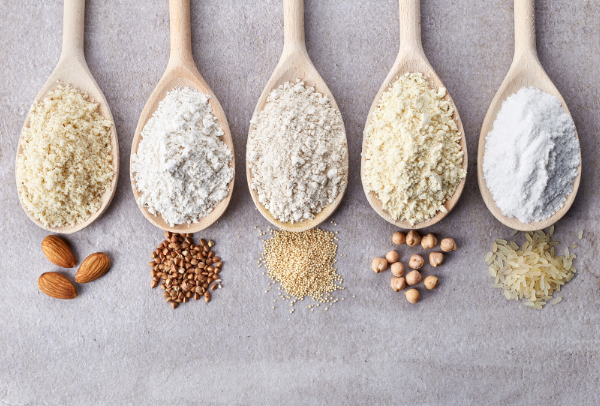Gluten Free vs Grain Free

We passionately believe that good gut health is the basis of well being, and is a major reason we curated restaurant menus and products designed to support and nourish the digestive tract.
Good digestive health generally equates to overall good health. The growth, repair, and renewal of your body is reliant upon the quality and variety of nourishment that you feed it as well as your gut’s ability to digest.
Gluten and grain free diets have been gaining popularity over the past few years. This may be due to more people learning about gut health and digestive well being, as a vast population of people are realizing their bodies react in digestive discomfort (among other types of reactions) to what they eat.
As we begin to see more and more products on grocery shelves that adhere to these two “diets,” we’ve noticed that the terms gluten free and grain free have occasionally been used interchangeably.
So, do they really mean the same thing?

What is Gluten Free?
Gluten is the key component to many bread, pasta, and baked goods recipes because it helps provide structure. Traditionally, it’s what gives bread dough its elasticity and keeps cakes from crumbling.
The actual gluten content in many products has risen over the years. The hybridization of wheat has become a more common agricultural practice across the US, as the goal of increasing yield and production quantity has become more prominent. However, a side effect of this hybridization is higher gluten content.
Historically, people used ancient wheat grains like spelt and einkorn which have a different composition than modern wheat strains. Bread was also typically fermented before baking using a sourdough culture for digestibility, a practice that is now normally reserved for special artisan breads. The average loaf on the modern market is highly refined, low in nutrients, and difficult to digest.
This could be a main reason as to why so many people either find they have trouble digesting gluten, or find it causes inflammation/reaction in their body. The ingestion of gluten has been known to trigger an immune response which causes inflammation, as certain proteins within the gluten molecule are difficult to digest and cause an imbalance in gut flora.
As of 2016, there are an estimated three million Americans who have Celiac Disease, an autoimmune condition in which the body sees gluten as a toxin. When gluten is ingested, even just a few crumbs, the body attacks and damages the small intestines which can lead to malnourishment among other things. Therefore, those who have Celiac must adhere to a strict gluten free diet.
Meanwhile, others who may not have Celiac still may be gluten intolerant or sensitive, meaning they experience some form of inflammation after consuming gluten. To learn more about exactly what gluten is and why it can cause so much inflammation, read our post on Why Gluten Free.
So what exactly does a gluten free diet mean?
A gluten free diet doesn’t just mean wheat-free, but means removing all gluten-containing ingredients and their derivatives. This includes wheat, rye, barley, spelt, and farro to name a few.
However, gluten free diets can include the consumption of grains such as corn, rice, quinoa, and oats. Rice flour is generally used in combination with tapioca starch and/or potato starch, other flours such as sorghum or millet, and a gum-like xanthan to make baking mixes. Other popular gluten free flours also include teff and buckwheat (which are grains).
What is Grain Free?
Rather than omitting only gluten-containing ingredients, grain free products go a step further by eliminating all grains such as corn, rice, oats, and millet among many others.
Instead of using quinoa, rice, or corn, grain free products opt for ingredients and flours such as coconut and cassava (we also love plantain flour). These ingredients tend to be low on the glycemic index and much more gut-friendly, and are also gluten free. To read more in-depth about grains and why we choose to omit them in our products and restaurants, read our post on Why Grain Free.

Although grain free products are inherently gluten free as well, you should still be mindful if you have celiac disease as these products can still be cross-contaminated in the manufacturing process. Be sure the products you purchase are labeled gluten free or certified gluten free to ensure that they have been tested for cross-contamination. Without that label, the product may not be safe to consume.
So, there you have it! While the terms gluten free and grain free can mean different things, a grain free diet overall generally means the foods you consume are also free of gluten.



